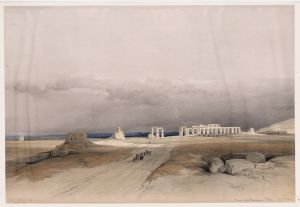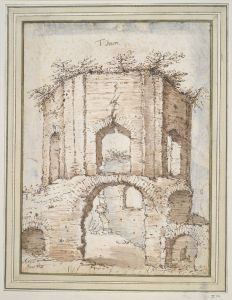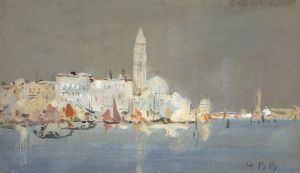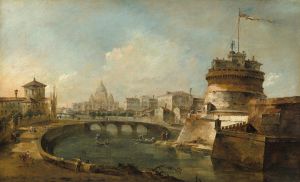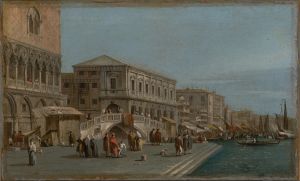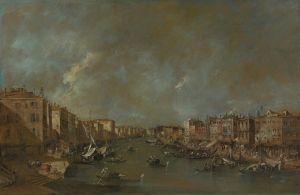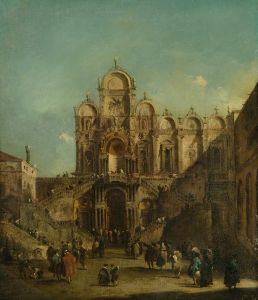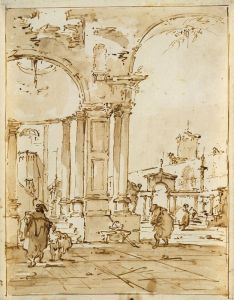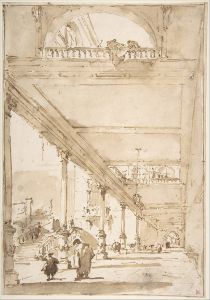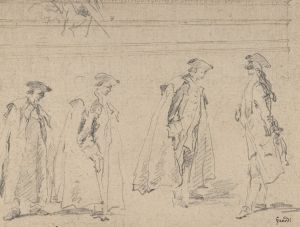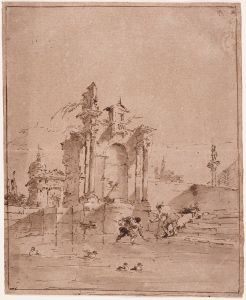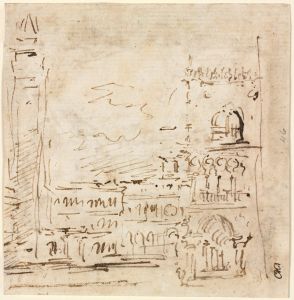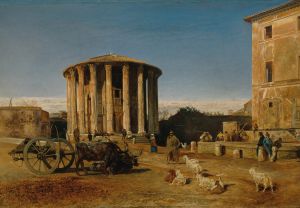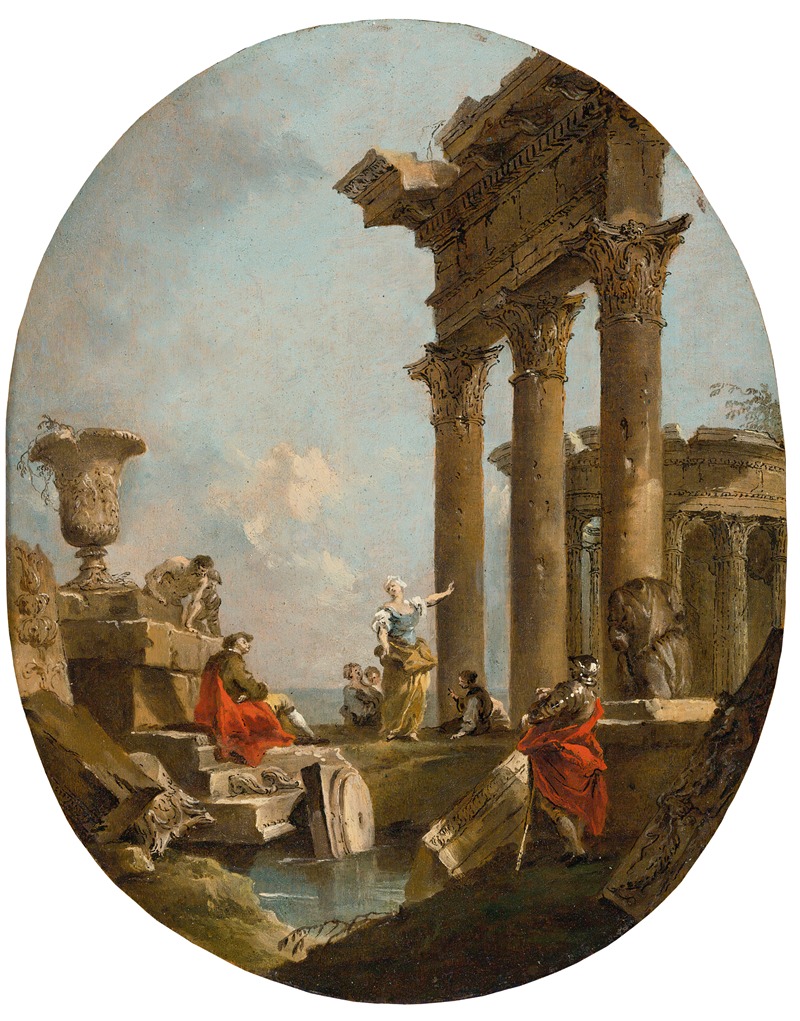
An Architectural Capriccio With Figures Amongst Classical Ruins, A Temple Beyond
A hand-painted replica of Francesco Guardi’s masterpiece An Architectural Capriccio With Figures Amongst Classical Ruins, A Temple Beyond, meticulously crafted by professional artists to capture the true essence of the original. Each piece is created with museum-quality canvas and rare mineral pigments, carefully painted by experienced artists with delicate brushstrokes and rich, layered colors to perfectly recreate the texture of the original artwork. Unlike machine-printed reproductions, this hand-painted version brings the painting to life, infused with the artist’s emotions and skill in every stroke. Whether for personal collection or home decoration, it instantly elevates the artistic atmosphere of any space.
Francesco Guardi, an Italian painter of the 18th century, is renowned for his evocative landscapes and cityscapes, particularly those depicting Venice. Among his works, "An Architectural Capriccio With Figures Amongst Classical Ruins, A Temple Beyond" stands out as a notable example of his capriccio style. This painting, like many of Guardi's capriccios, combines real and imagined architectural elements to create a fantastical scene that captures the viewer's imagination.
The term "capriccio" refers to a genre of painting that blends architectural elements, often in a fantastical or imaginative manner, rather than adhering strictly to realistic depictions. Guardi was a master of this genre, and his works often feature a mix of classical ruins, grandiose buildings, and lively figures, all set within a dreamlike landscape. This approach allows for a creative exploration of architectural forms and historical references, offering viewers a glimpse into a world that is both familiar and fantastical.
In "An Architectural Capriccio With Figures Amongst Classical Ruins, A Temple Beyond," Guardi employs his signature style to depict a scene filled with classical ruins. The painting features a variety of architectural elements, including columns, arches, and a temple, which are reminiscent of ancient Roman or Greek structures. These elements are arranged in a manner that suggests a narrative or historical context, inviting viewers to imagine the stories behind the ruins.
The figures in the painting, though not the central focus, add a dynamic element to the composition. They are depicted engaging in various activities, such as conversing or exploring the ruins, which brings a sense of life and movement to the scene. These figures, often dressed in contemporary 18th-century attire, serve to bridge the gap between the ancient and the modern, highlighting the timeless allure of classical architecture.
Guardi's use of light and shadow in this painting is particularly noteworthy. He employs a delicate interplay of light to highlight the textures and details of the architectural elements, creating a sense of depth and dimension. The soft, diffused light lends an ethereal quality to the scene, enhancing the dreamlike atmosphere that is characteristic of his capriccios.
The painting reflects Guardi's fascination with the past and his ability to reinterpret it through a contemporary lens. His capriccios often evoke a sense of nostalgia and wonder, inviting viewers to reflect on the passage of time and the enduring beauty of classical architecture. This work, like many of Guardi's paintings, showcases his skill in blending reality with imagination, creating a visual narrative that is both captivating and thought-provoking.
Francesco Guardi's contributions to the art world, particularly through his capriccios, have left a lasting impact on the genre of landscape painting. His ability to transform architectural elements into imaginative compositions continues to inspire artists and art enthusiasts alike. "An Architectural Capriccio With Figures Amongst Classical Ruins, A Temple Beyond" remains a testament to Guardi's artistic vision and his mastery of the capriccio style.





